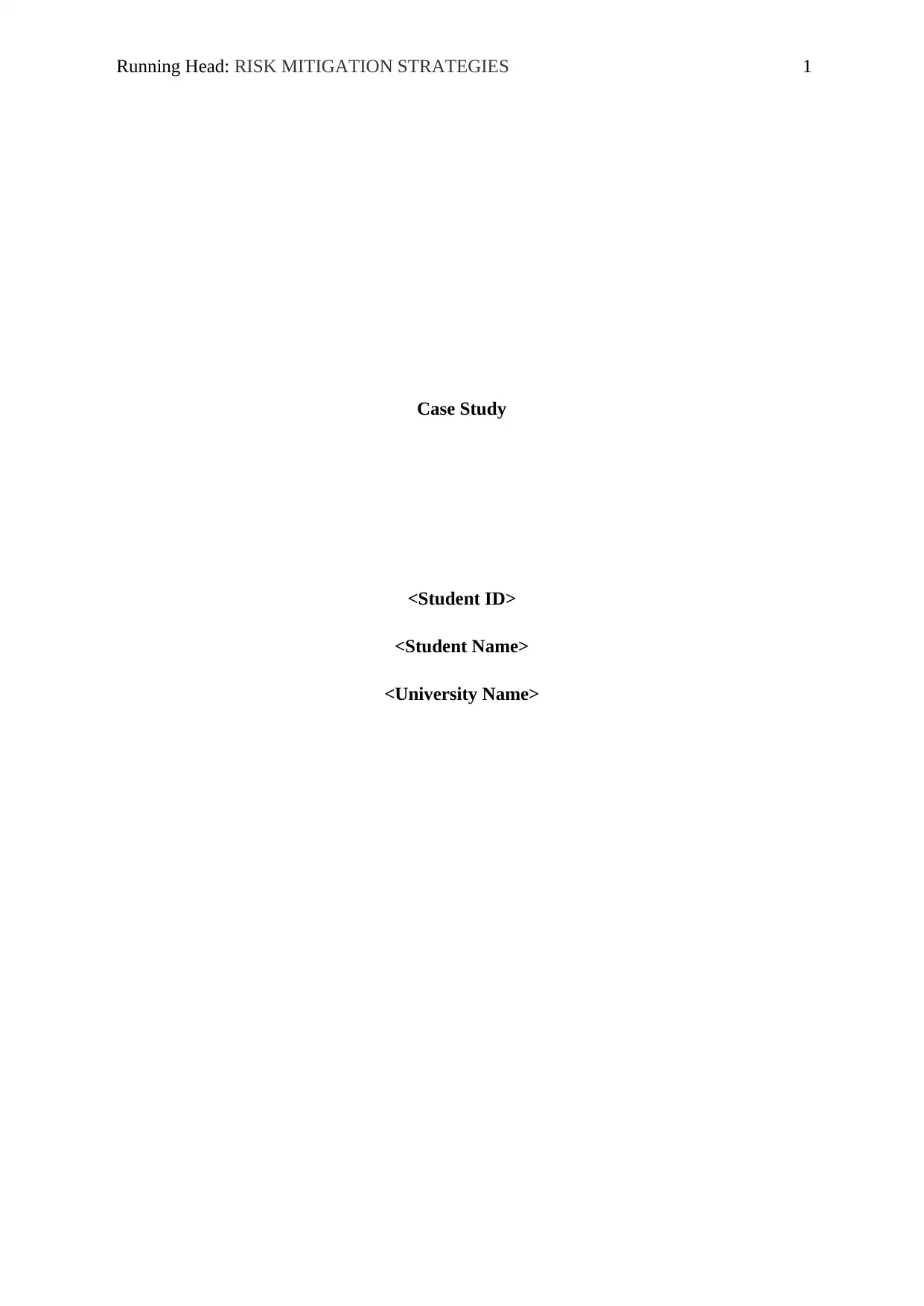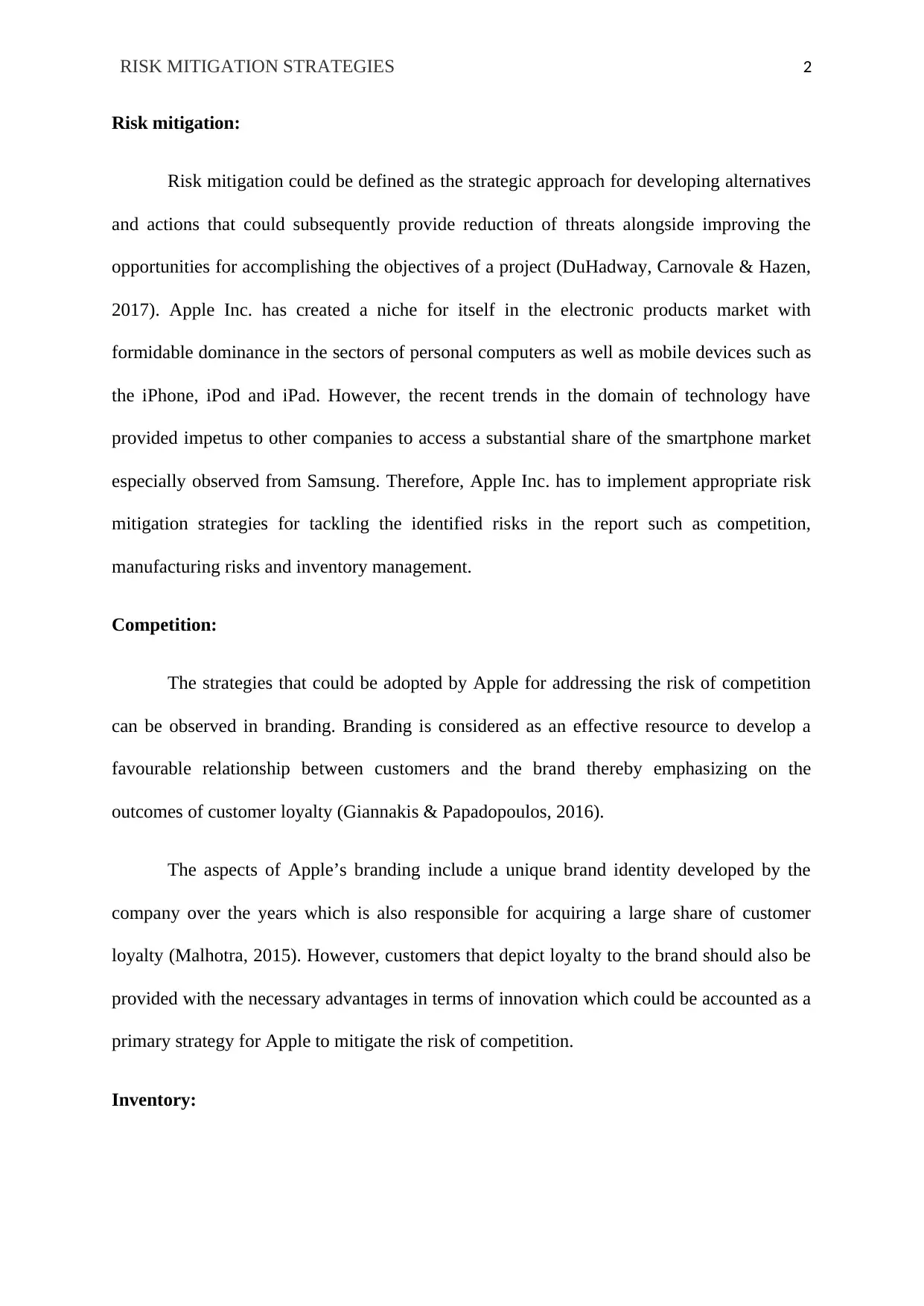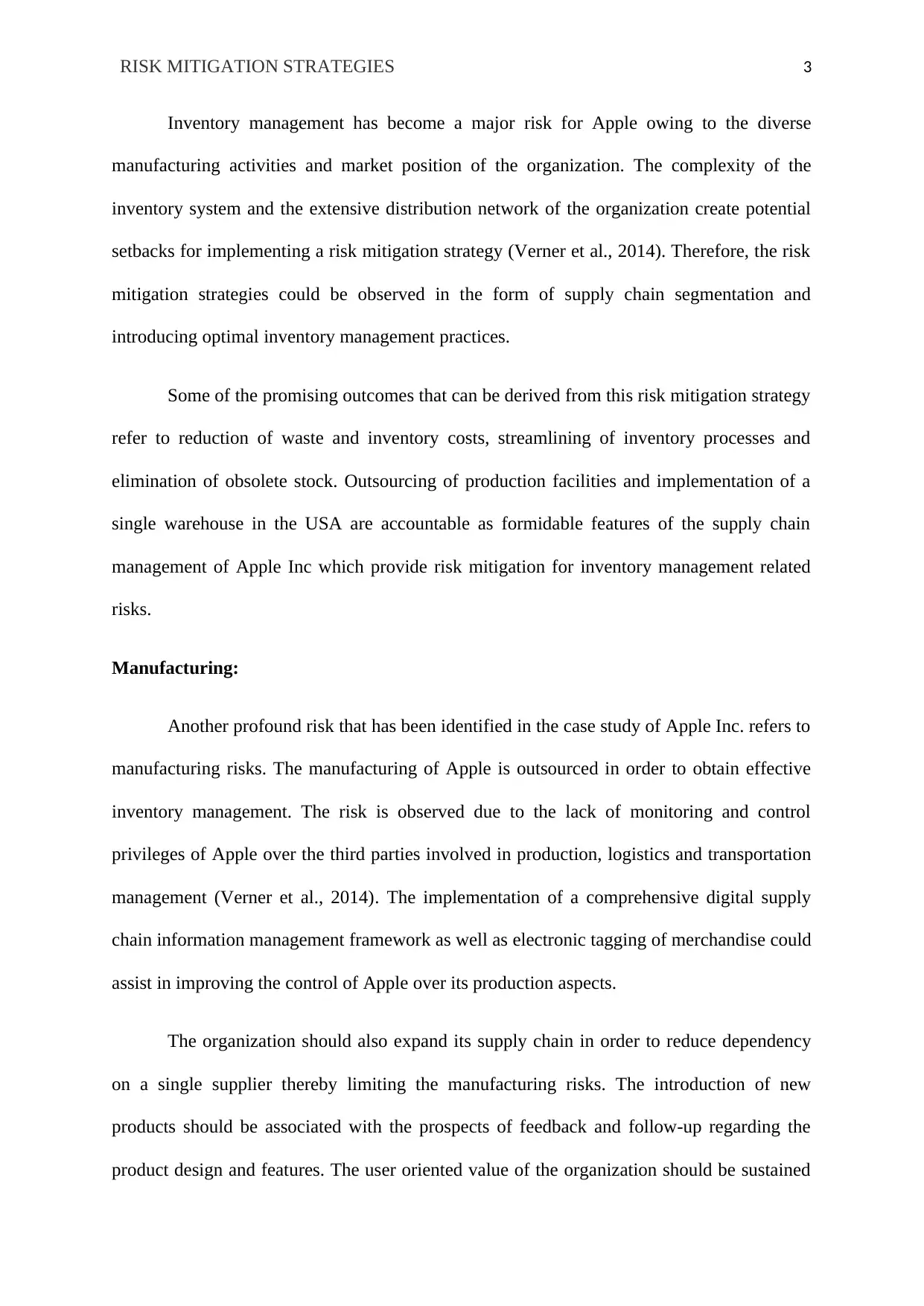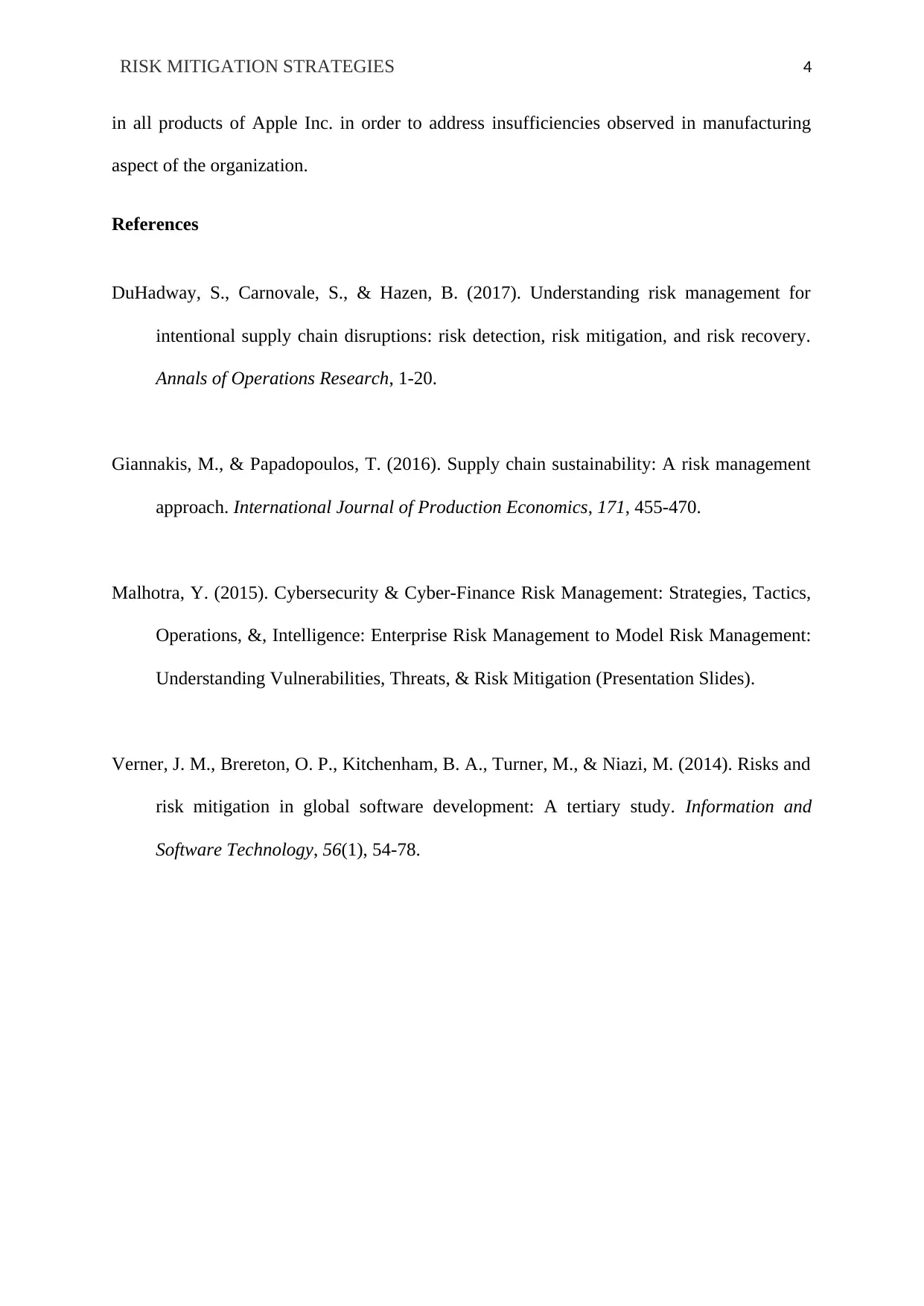Risk Mitigation Strategies in Apple Inc. - A Case Study Analysis
VerifiedAdded on 2020/04/07
|4
|790
|156
Case Study
AI Summary
This case study analyzes Apple's implementation of risk mitigation strategies to address various identified risks including competition, manufacturing, and inventory management. With increasing competition from companies like Samsung in the smartphone market, Apple focuses on maintaining its brand loyalty through innovation as a primary strategy against competitive threats. The complexity of Apple’s extensive distribution network poses challenges for inventory management; thus, supply chain segmentation and optimal inventory practices are suggested to mitigate these risks by reducing waste, costs, and obsolete stock while consolidating production facilities. Manufacturing risks arise due to Apple's reliance on third-party production, which lacks direct monitoring control. To counter this, the study recommends a comprehensive digital supply chain information framework along with electronic tagging of products for enhanced oversight. Additionally, diversifying suppliers and incorporating user feedback in new product designs are advised to minimize manufacturing dependencies and improve overall risk management.
1 out of 4











![[object Object]](/_next/static/media/star-bottom.7253800d.svg)